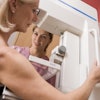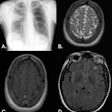Initial results of a multinational research study on x-ray quality control and patient dose conducted by the International Atomic Energy Agency (IAEA) reveal that up to 50% of x-ray exams performed in less developed nations are of substandard quality. What's more, many patients in these countries are being exposed to unnecessary radiation doses due to the need to repeat procedures.
On the positive side, the IAEA report indicates that the implementation of basic quality control programs can make significant improvements in both image quality and radiation dose. The study also showed that while some radiation doses were higher than necessary, doses in most developing countries were comparable to or lower than those in the developed world.
The project provides a rare look at the radiology practices of 34 participating countries in Africa/Middle East (13), Asia (15), and Eastern Europe (6), for which comparative information is scarce and difficult to obtain. Most research studies performed in the past 20 years do not adequately address the issue of radiographic image quality and its relationship to established patient dose levels, according to Dr. Madan M. Rehani, coordinator of the study and a radiation safety specialist at the IAEA's Radiation Protection of Patients Unit, located in Vienna.
The main objective of the project, which began in August 2005, was to introduce a patient protection program for conventional radiography procedures to health ministries in countries with less developed economies. The patient protection program is designed to fulfill the criteria of the IAEA's International Basic Safety Standards for Protection Against Ionizing Radiation and for the Safety of Radiation Sources, an international effort to harmonize global radiation protection and safety standards.
The newly published survey in the June 2008 issue of the American Journal of Roentgenology (Vol. 190:6, pp. 1453-1461) presents initial project results on image quality assessment, typical dose levels to patients having seven common radiographic examinations, and a comparison of data from 45 hospitals located in 14 countries in Africa, Asia, and Eastern Europe, with the goal of establishing diagnostic reference levels (DRLs) -- a mean target for appropriate radiation dose for different types of radiography exams. Data from the other 20 participating countries is still being acquired, and data from two of the 14 countries reported was incomplete, according to lead author Wilbroad Muhogora, a health radiation physicist at the Tanzania Atomic Energy Commission.
Each country was asked to identify a minimum of two hospitals with two x-ray rooms, but this was not a mandatory requirement for participation. Of the 14 countries discussed in the initial survey report, three countries had only one hospital participate, and the largest number of hospitals participating was seven, in the United Arab Emirates (UAE).
Data was collected for chest posteroanterior (PA), lumbar spine anteroposterior (AP), lumbar spine lateral (LAT), abdomen AP, pelvis AP, skull AP, and skull PA examinations performed over a consecutive 14-day period. The study did not publish statistics of the actual number of procedures performed.
Experienced radiologists graded the quality of x-ray films, keeping in mind the European Commission's 1996 Guidelines on Quality Criteria for Diagnostic Radiographic Images, and used labeling categories developed by Rehani. "Grade A" images were rated acceptable. "Grade B" were films accepted with reservations, and films with unacceptable images requiring repeat examinations were graded "C."
Patient dose based on entrance surface air kerma (ESAK) was evaluated and compared with established DRLs. A minimum of 10 examinations per procedure for each originating x-ray room were evaluated.
Prior to patient dose assessment, information was collected on x-ray exposure parameters (kVp, mAs) and geometrical parameters used in x-ray examinations of adult patients of average body mass. X-ray exposure parameters for each procedure were used to estimate patient doses using a protocol of incident kerma measurements and ESAK calculations.
Data from at least two x-ray rooms per hospital were encouraged so that important interroom differences in patient doses and image quality could be identified as issues to address in the patient protection program. Of the 14 countries reported in the initial study, 10 complied.
Quality control
After the data were evaluated, before the second phase of the project was initiated, quality control tests were performed to identify equipment malfunctions and to apply appropriate corrective actions based on image quality assessment and equipment performance, Rehani said.
Equipment-related corrections included repair and optimization of x-ray machines, use of new intensifying screens, increasing additional filtration, and improving film processing conditions. At some hospitals, film was replaced. Technique-related corrective measures included technique modification by radiographers, increasing tube voltage, and lowering mAs. Radiographers also were advised how to obtain good images even when an x-ray machine could not be made to function optimally.
"Radiology staff was also counseled by national coordinators on a hospital-by-hospital basis on dose reduction strategies and on the necessity to improve image quality," Rehani said. "Knowledge of image quality and patient dose level, as well as reasons behind poor quality and higher doses, provide a basis for setting corrective actions in order to optimize the protection of the patient in an effective manner."
The results of the image quality assessment (see chart below) demonstrate a high frequency of poor-quality radiographs, which is likely due to absent or ineffective quality assurance and patient control programs by hospitals participating in the survey, according to Muhogora and colleagues. After patient protection programs were implemented, all but one hospital reduced the number of examinations requiring repeats.
In addition, dose levels identified by ESAK were mostly below the diagnostic reference levels for x-ray exams. Variations were smaller than in most wide-scale studies because of the small number of hospitals reporting. The researchers attributed ESAK variations to different levels of training in radiology, the choice of radiographic technique, the film-screen combination type in use, body habitus, and the status of implementation of radiation protection standards.
Image quality improvements after implementing a quality control (QC) program in Africa, Asia, and Eastern Europe
|
|||||||||||||||||||||||||||||||||||||||||||||||||||||||||||||||||||||||||||||||||||||||||||||||||||||||||||||||||
The influence of film-screen combination speed on ESAK variations in the study was also likely to be significant because of the different film-screen speed classes that were in use. Rehani pointed out that the differences in dealing with this variable in patient dose surveys indicate the need to have a consensus for better harmonization.
With the exception of a few cases, the dose values obtained were below the DRLs recommended in Europe and the U.K. This refutes the common assumption that radiation doses to patients in developing countries are usually higher than those in developed countries.
Rehani cautioned that it's difficult to extrapolate the results of the study to an entire country due to the limited number of hospitals that participated and noted that larger surveys are needed. Still, the research indicates that it is possible to reduce radiation dose, even in less-developed countries.
"The experience from this study should form a basis to strengthen patient protection programs where they exist and to establish such programs where they do not yet exist," Rehani said.
By Cynthia Keen
AuntMinnie.com contributing writer
June 3, 2008
Related Reading
CT experts grapple with rising concerns about radiation dose, May 14, 2008
New studies examine CR, CT radiation dose, March 9, 2008
AAPM offers report on CT radiation reduction, February 19, 2008
ACR responds to NEJM article on CT radiation risks, November 29, 2007
Increased use of CT scans raises risk of higher radiation exposures, November 20, 2007
Copyright © 2008 AuntMinnie.com


















